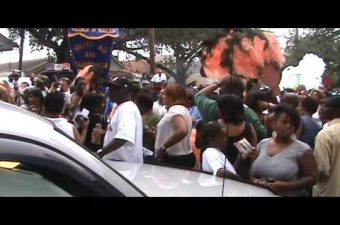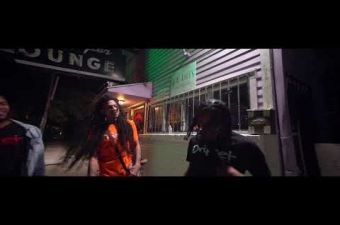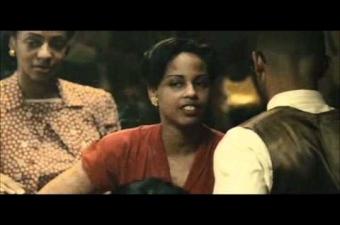Sandpiper Lounge
2119 Louisiana AvenueNew Orleans LA 70115
The Sandpiper Lounge was a home away from home for its regulars and for many in the second line community for decades beginning in the 1970s, and became a live music venue in the years following Hurricane Katrina. Its midcentury-style neon sign, featured in movies including the 2004 Ray Charles biopic “Ray,” helped make it an Uptown landmark.
The barroom’s turn to live music came in 2008, when guitarist Billy Iuso, who is white, walked in and spoke to proprietor Benny Simmons, who is Black, like nearly all of the bar’s patrons to that point. Iuso lived nearby, and had been looking for a place where his band, the Restless Natives, could hold down a weekly gig. Simmons gave him a chance to play on Monday nights, and the unlikely pairing took off.
“I’ve never seen so many people in here, and I’ve been here for 20 years,” bartender Lisa Davis told New Orleans CityBusiness in 2009. At the end of their shows, Simmons started joining the band on vocals and harmonica.
Iuso cut a record here, “Live at the Sandpiper Lounge,” to pay homage to the area’s musical legacy. “The Meters and the Neville Brothers wouldn’t be what they are without the neighborhood places like the Dew Drop Inn and the Nite Cap, which were both in Central City,” he told CityBusiness.
In this post-Katrina period, the lounge was also a regular stop on second line parade routes for Uptown social aid and pleasure clubs, including the VIP Ladies and Kids, Perfect Gentlemen, and the Prince of Wales.
From 2014 through 2020, the Golden Comanches Black Masking Indians took to the street on Mardi Gras morning from the Sandpiper. The group, long based in Central City, released an album in 2015, and its Spyboy, Eric Gordon, is also the trumpeter for Galactic, among other bands.
By the 2010s the Sandpiper also welcomed DJs and the occasional hip hop act.
Pre-Katrina heyday
The Sandpiper’s pre-Katrina heyday came under longtime owner Joseph Jones—Simmons’ uncle—who took the helm in 1978. Uptown social aid and pleasure clubs were part of his customer base from the beginning, as were residents of the nearby Magnolia public housing development.
“I had a nice crowd, a very loyal crowd,” Jones told A Closer Walk. Customers seemed never to want to leave, so eventually he kept the place open 24 hours a day. The format made the Sandpiper a favorite destination for after-parties, especially following dances thrown by social aid and pleasure clubs as fundraisers for their annual second lines.
One Sandpiper regular, the renowned photographer Polo Silk, recalled, “People actually used to leave to go to work from there, and people get off from work and come there.”
Polo went to the Sandpiper to unwind after taking pictures at nightclubs like Big Man Lounge, where he documented the early years of hip-hop in New Orleans. Mr. Jones used a buzzer at the door and maintained a dress code, which was painted on a front window—inside, a mature crowd drank set-ups and played Anita Baker on the jukebox.
Polo told A Closer Walk that on occasion, when a Saturday night stretched into Sunday morning at the Sandpiper, he’d say, “‘Well, the sun up—we might as well go down the street and get some breakfast, then come [back] here and wait on the second line.’ Sometimes, stepping out there, some of my mama friends be on their way to church. And I’m supposed to be going to church, and they see me, and I see that look they give me.”
The Sandpiper served food of its own, too. Mr. Jones’ niece Veronica Simmons recalled: “We had a smoked sausage, and you got crackers and mustard with it…There was a particular Caucasian guy that used to bring it around, but after Katrina, he didn’t come back, so we never was able to find him again. Nobody can find that sausage.”
The early years and preservation efforts
This barroom first opened in 1957 as Turk’s Lounge under proprietor E.J. Tircuit (there was also a Turk’s Lounge downtown on N. Claiborne Avenue, which presented artists including Billy Tircuit, leader of the Tropicals and a singer in the Monitors).
The Sandpiper’s distinctive neon sign, with the word “Music” arranged vertically on a piano, led some to assume that this building hosted concerts in this period, but there is no record of any at the Uptown location of Turk’s Lounge. Rather, the midcentury-style lettering and piano-shaped neon were added to the Sandpiper’s ca. 1975 sign in 2004 for an establishing shot in the movie “Ray,” to set up an interior scene in which Jamie Foxx as Ray Charles sings “Baby Let Me Hold Your Hand.”
By 1960 a new proprietor took over and ran the club for over a decade as the Madrona, “New Orleans’ Finest Cocktail Lounge and After-Dark Rendezvous” (it likely served as a duck-off for concert-goers on their way to and from Vernon’s on the corner, a hub for modern jazz in New Orleans in the early 60s). Madrona’s also functioned as a ticket outlet for shows by the likes of Dave Bartholomew and Clyde Kerr, Sr. at larger venues around town.
The building’s pre-Sandpiper era was a distant memory in 2019, when, as Central City gentrified, L. Kasimu Harris documented the bar as part of his acclaimed project, “Vanishing Black Bars and Lounges.”
Soon after the COVID-19 pandemic shut the bar down, and Louisiana Avenue was torn up for years afterward, cutting off the Sandpiper from traffic. Issues with a contractor then left the building in precarious condition, but Mr. Jones’ family is currently working to renovate it.
Videos

The Single Ladies Social Aid & Pleasure Club's 2009 second line passes by the Sandpiper Lounge.
Video by Deb Cotton.
The Single Ladies Social Aid & Pleasure Club's 2009 second line passes by the Sandpiper Lounge.

Billy Iuso and Restless Natives performing at the Sandpiper Lounge in 2012.
Video posted by boxcarwilly.
Billy Iuso and Restless Natives performing at the Sandpiper Lounge in 2012.

Grandera (Tripple Jones and Tatty Jones) performing at the Sandpiper Lounge in 2019.
Video by Ced Cinematics.
Grandera (Tripple Jones and Tatty Jones) performing at the Sandpiper Lounge in 2019.

The Sandpiper Lounge in the 2004 movie "Ray," for which its ca. 1975 neon sign was outfitted with the word "Music."
Video posted by agonna.
The Sandpiper Lounge in the 2004 movie "Ray," for which its ca. 1975 neon sign was outfitted with the word "Music."
Images









